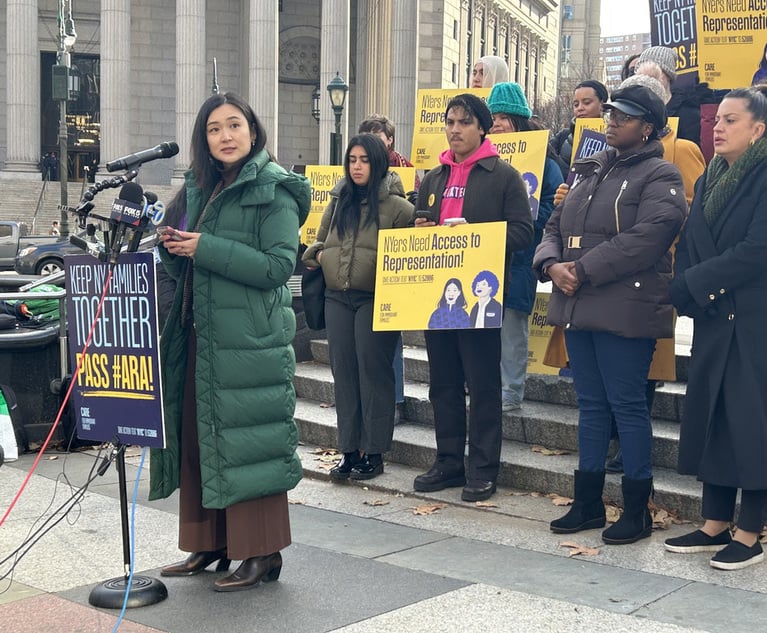How to Get Permission for a Non-Citizen to Stay and Work for You in the U.S.
Richard Link writes: You've found the right person for your job opening, but you suspect there's going to be one little catch: She's not a U.S. citizen. In fact, you're pretty sure she doesn't have any kind of legal status in the United States. Is there any way to hire this person? The short answer is maybe, and it won't be easy. But with enough advance planning, it is possible for you as the employer to obtain for certain workers the right to live and work in the United States, either temporarily or permanently.
June 23, 2017 at 02:02 PM
20 minute read
You've found the right person for your job opening, but you suspect there's going to be one little catch: She's not a U.S. citizen. In fact, you're pretty sure she doesn't have a green card or any other kind of legal status in the United States that would allow her to work for you. Is there any way to hire this person?
The short answer is maybe, and it won't be easy. But with enough advance planning, it is possible for you as the employer to obtain for certain workers the right to live and work in the United States, either temporarily or permanently.
Before You Begin
Before you spend time and money sponsoring your worker, be certain there are no other ways in which she can obtain work authorization. Certain immigration statuses carry with them an automatic right to work for anyone, anywhere in the country. Permanent residence (a “green card”) is one of those; you might want to explore with your prospective employee whether she has any way (other than through you as an employer) to get a green card. Typically, this would involve marriage to a U.S. citizen or some other close family relationship to a U.S. citizen. Keep in mind that refugees, people granted asylum and people granted Temporary Protected Status are work authorized, as long as they have obtained an employment authorization card.
If there are no other options, it will fall to you to sponsor your intended employee. Sponsoring means filing a petition with U.S. Citizenship and Immigration Services (USCIS) to classify your intended employee as someone who is potentially eligible for legal status in one of the various categories of workers recognized under the immigration law. It can take many months for USCIS to approve your petition, unless you pay a significant extra fee for a quick decision. Moreover, your petition is not the only step in the process. Your worker has to meet the legal requirements for changing her status in the United States, or else leave the country and obtain a work visa to come back. If you're trying to get your worker a job-based green card or authorization for certain temporary work, you may face an additional hurdle: proving you're not harming the job prospects of U.S. workers.
Classifying Your Employee
Let's look at the various steps in the process in a little more detail. To start, you must determine your needs and your intended employee's immigration goals. Broadly speaking, the possibilities are permanent residence in the United States for your employee or temporary residence, either short-term or long-term. In all cases, you must identify a category of workers in which your intended employee would fit. Each category has rules for who qualifies—some simple, some complex.
This content has been archived. It is available through our partners, LexisNexis® and Bloomberg Law.
To view this content, please continue to their sites.
Not a Lexis Subscriber?
Subscribe Now
Not a Bloomberg Law Subscriber?
Subscribe Now
NOT FOR REPRINT
© 2025 ALM Global, LLC, All Rights Reserved. Request academic re-use from www.copyright.com. All other uses, submit a request to [email protected]. For more information visit Asset & Logo Licensing.
You Might Like
View All
As Second Trump Administration Approaches, Businesses Brace for Sweeping Changes to Immigration Policy

Immigration Under the Trump Administration: Five Things to Expect in the First 90 Days
10 minute read
Trending Stories
- 1Deal Watch: Latham, Paul Weiss, Debevoise Land on Year-End Big Deals. Plus, Mixed Messages for 2025 M&A
- 2Bathroom Recording Leads to Lawyer's Disbarment: Disciplinary Roundup
- 3Conn. Supreme Court: Workers' Comp Insurance Cancellations Must Be Unambiguous
- 4To Avoid Conflict, NYAG Hands Probe Into Inmate's Beating Death to Syracuse-Area DA
- 5Scripture-Quoting Employee Sues Company for Supporting LGBTQ Pride
Who Got The Work
Michael G. Bongiorno, Andrew Scott Dulberg and Elizabeth E. Driscoll from Wilmer Cutler Pickering Hale and Dorr have stepped in to represent Symbotic Inc., an A.I.-enabled technology platform that focuses on increasing supply chain efficiency, and other defendants in a pending shareholder derivative lawsuit. The case, filed Oct. 2 in Massachusetts District Court by the Brown Law Firm on behalf of Stephen Austen, accuses certain officers and directors of misleading investors in regard to Symbotic's potential for margin growth by failing to disclose that the company was not equipped to timely deploy its systems or manage expenses through project delays. The case, assigned to U.S. District Judge Nathaniel M. Gorton, is 1:24-cv-12522, Austen v. Cohen et al.
Who Got The Work
Edmund Polubinski and Marie Killmond of Davis Polk & Wardwell have entered appearances for data platform software development company MongoDB and other defendants in a pending shareholder derivative lawsuit. The action, filed Oct. 7 in New York Southern District Court by the Brown Law Firm, accuses the company's directors and/or officers of falsely expressing confidence in the company’s restructuring of its sales incentive plan and downplaying the severity of decreases in its upfront commitments. The case is 1:24-cv-07594, Roy v. Ittycheria et al.
Who Got The Work
Amy O. Bruchs and Kurt F. Ellison of Michael Best & Friedrich have entered appearances for Epic Systems Corp. in a pending employment discrimination lawsuit. The suit was filed Sept. 7 in Wisconsin Western District Court by Levine Eisberner LLC and Siri & Glimstad on behalf of a project manager who claims that he was wrongfully terminated after applying for a religious exemption to the defendant's COVID-19 vaccine mandate. The case, assigned to U.S. Magistrate Judge Anita Marie Boor, is 3:24-cv-00630, Secker, Nathan v. Epic Systems Corporation.
Who Got The Work
David X. Sullivan, Thomas J. Finn and Gregory A. Hall from McCarter & English have entered appearances for Sunrun Installation Services in a pending civil rights lawsuit. The complaint was filed Sept. 4 in Connecticut District Court by attorney Robert M. Berke on behalf of former employee George Edward Steins, who was arrested and charged with employing an unregistered home improvement salesperson. The complaint alleges that had Sunrun informed the Connecticut Department of Consumer Protection that the plaintiff's employment had ended in 2017 and that he no longer held Sunrun's home improvement contractor license, he would not have been hit with charges, which were dismissed in May 2024. The case, assigned to U.S. District Judge Jeffrey A. Meyer, is 3:24-cv-01423, Steins v. Sunrun, Inc. et al.
Who Got The Work
Greenberg Traurig shareholder Joshua L. Raskin has entered an appearance for boohoo.com UK Ltd. in a pending patent infringement lawsuit. The suit, filed Sept. 3 in Texas Eastern District Court by Rozier Hardt McDonough on behalf of Alto Dynamics, asserts five patents related to an online shopping platform. The case, assigned to U.S. District Judge Rodney Gilstrap, is 2:24-cv-00719, Alto Dynamics, LLC v. boohoo.com UK Limited.
Featured Firms
Law Offices of Gary Martin Hays & Associates, P.C.
(470) 294-1674
Law Offices of Mark E. Salomone
(857) 444-6468
Smith & Hassler
(713) 739-1250







